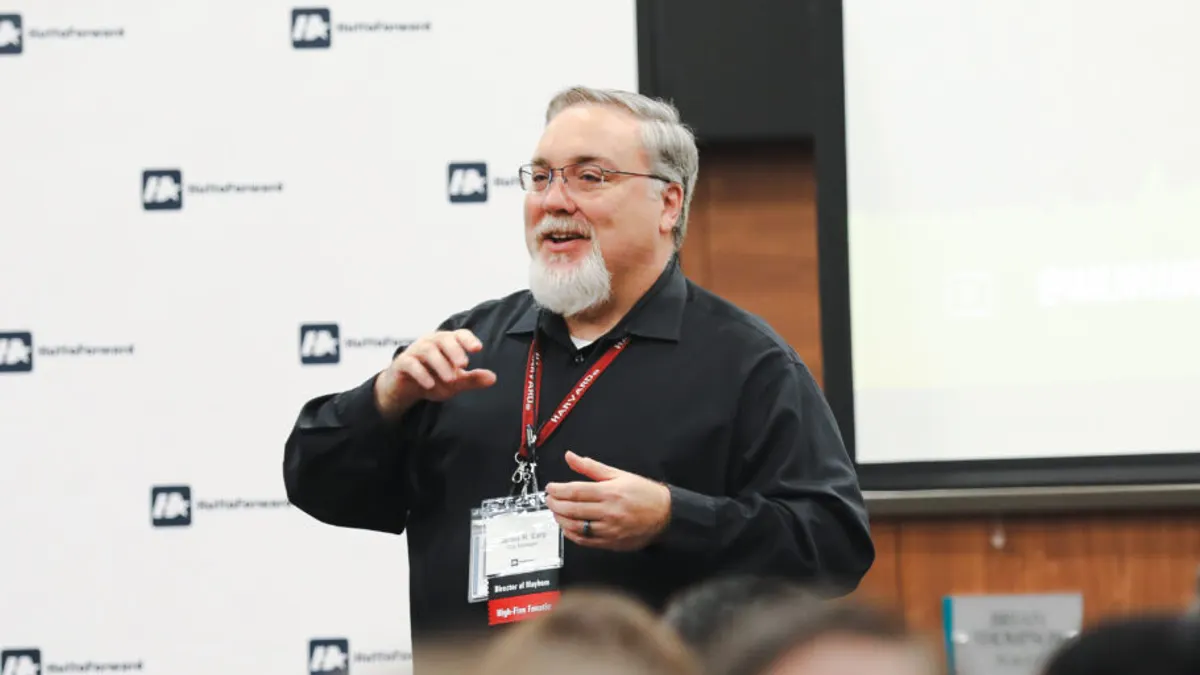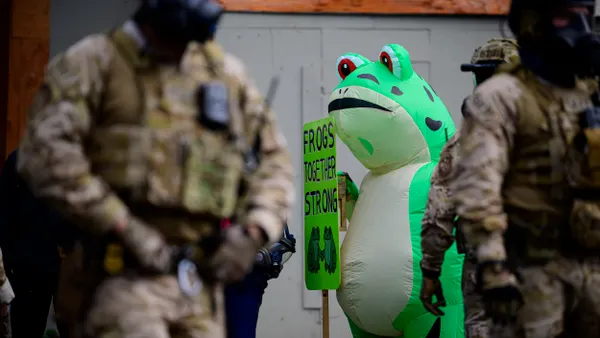During her 18 years as a probation officer in Livingston County, New York, Lynne Mignemi spent significant time with the people she supervised. Because probation sentences can be as long as 10 years, “we get to know the individual,” she said..” We get to know their families.”

Some of those people faced mental health and addiction issues, she said. “I had people that I worked with die by suicide or overdose.” Back then, she said, law enforcement culture required people to “square your shoulders and get on with it.”
“There wasn't a lot of debriefing about it,” she said. “There wasn't a lot of discussion about it beyond the initial notice, and there wasn't a lot of guidance.”
Mignemi promised herself she would change that culture when she had an opportunity to do so. When she became a probation supervisor in 2004 and probation department director in 2011, she set about making the staff’s physical and mental health a priority. Those efforts for her staff and the Livingston County community led American City & County (now part of Smart Cities Dive) to select Mignemi as a 2024 Exemplary Public Servant.
In the probation office
“Law enforcement is incredibly stressful work. All of my officers have lost individuals that they have worked with to suicide and overdose death,” Mignemi said. “So many losses, even more than what I experienced in my 18-year time period in the field. I just promised myself and them that I would do things differently” and lead by example.
Mignemi encourages her officers to reach out to the family members of those whose lives were lost to offer condolences or attend wakes and pre-funeral calling hours. “We talk about how they're feeling about things, if they need to use personal time, just to take the day off, regroup. I tell them all the time that their physical and mental health is my priority.”
This, Mignemi said, has been a hallmark of her leadership.
“Everybody in law enforcement talks about this stress in hushed tones, and there's a lot of fear around it,” she said. “So, I thought, if I could be a voice at the table, I could help and support staff, but we could also perhaps foundationally reduce suicide deaths in our population that we work with.”
In the community
In 2013, Rodney Corry, then the director of community services for the county’s community mental health services, asked Mignemi to be a founding member of the Livingston County Suicide Prevention Task Force. At the time, Mignemi says, Livingston County had the highest suicide rate per 100,000 people in New York’s Finger Lakes region. Serving on the task force “was just a natural fit for my philosophy, for the work that I was already doing,” she said.
Mignemi said working with the task force has been greatly rewarding. “Our goal was to become known as the prevention agency, where people that needed resource information could come to and trust us to get them the correct, reliable, evidence-based program. And so, we've met that mission statement.”
The task force offers several programs to help break down the stigma of mental health challenges. For more than a decade, it has held a candlelight vigil around World Suicide Prevention Day in September that welcomes people who have lost loved ones to suicide or overdose, are attempt survivors or have faced mental health challenges. “It's really designed to be a hopeful evening of remembrance and support,” Mignemi said.
The task force has also formed a support group called Step by Step, which meets monthly. “It takes greater courage to ask for help and get help. It's a tremendously courageous step, as far as I'm concerned, and people know that here,” she said.
The Lock and Talk program supports the safe storage of firearms, medications and other potentially dangerous items to reduce access to lethal means of causing self-harm.
“The branding is ‘Lock guns. Lock meds. Talk safety.’ The discussion is not about removing someone's firearms from them or [having] anything to do with the Second Amendment,” she explained. “It just has to do with the fact that if you or someone you know is facing a mental health crisis or challenge, that you take steps relative to safe storage of all of those items. It makes the discussions around the topic much less emotional and much less stressful because we're talking about safety versus removal,” she said.
“We're a small rural county, and we have a lot of hunters in our county. We wanted to connect with them because most people with legal firearms are very safety-conscious. We wanted to bring them into the conversation. Many of them had not been exposed to suicide prevention discussions, models or programs.”
As part of that outreach, the court clerks give out bags with Lock and Talk branding and educational information when someone purchases a hunting license, an initiative Mignemi said has been enormously successful.
Seeing results
The efforts of Mignemi and the task force have helped reduce suicides and overdose deaths in Livingston County. The county went from being No. 1 for suicide loss in the nine-county Finger Lakes region to No. 8. But looking at the data is complicated, Mignemi said.
“I'm always looking at the numbers feeling like they're not where we want them to be. I think that also comes with the profound nature of the loss. So, if you're coming from the perspective of one loss is too many, then it's always hard to look at the numbers where there are more than one and feel like total success … I definitely feel like we have people in Livingston County talking about suicide prevention and mental health. They know the task force exists. We have accomplished our mission statement of being that organization that people come to when they need information or resources.”
Mignemi credits her parents and their own public service as her role models. But she points out the role many community members can play in supporting community mental health.“It’s the little things that make a difference. We see it in people who step up to coach our children. We see it in volunteer service and fire departments, and local governments and churches, and so many places. But sometimes, I think we get stuck in our head that it has to be a big, grand gesture, and it's the classic old [saying] that the small things mean the most.”













